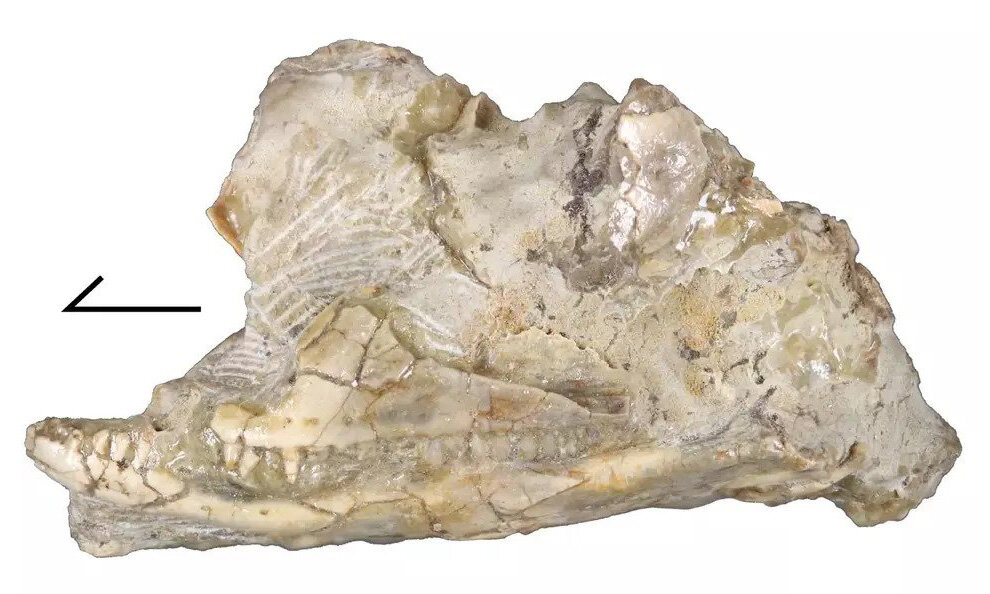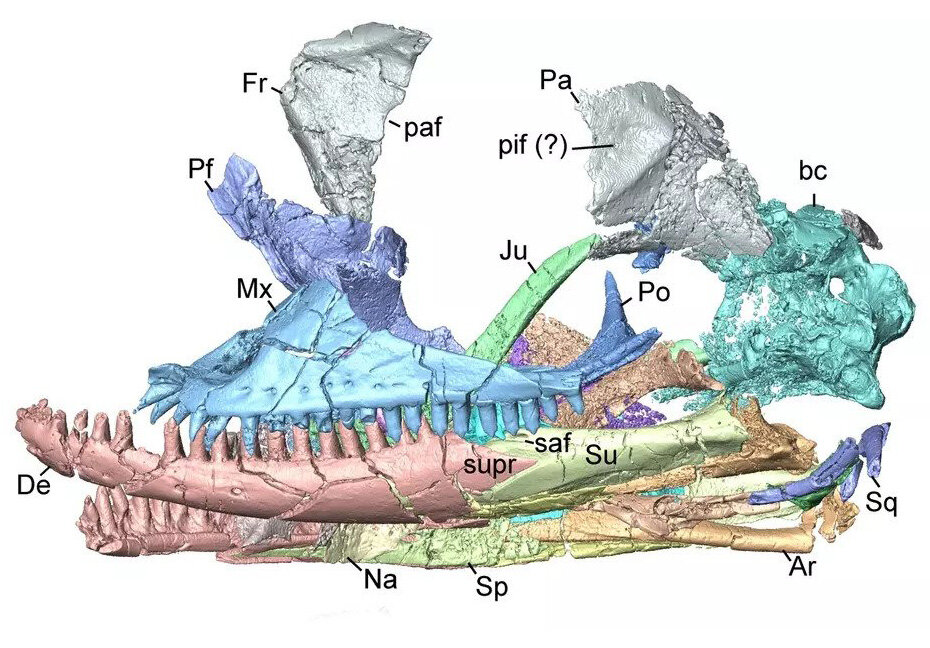A skull unearthed in 1971 and stored at Yale’s Peabody Museum of Natural History has finally been studied and described — uncovering a new species.

Lizard fossils aren’t particularly plentiful, as their bones tend to break apart rather easily. Most of the fossils we do have of them, therefore, come as isolated fragments, not complete specimens. That’s what makes the discovery of the present fossil, a beautifully-preserved skull about one inch long with a mouth full of sharp teeth, all the more exciting. Based on the skull, University of Texas at Austin graduate student Simon Scarpetta described a new fossil species.
New lizard on the block
“Anytime you find a skull, especially when you’re trying to figure out how things are related to each other, it’s always an exciting find,” Scarpetta says.
Scarpetta found the skull back in 2007 and brought it back to the Jackson School of Geosciences at The University of Texas for study. It turned out to be a completely new species, which he christened Kopidosaurus perplexus. The first half of its name is a reference to the lizard’s teeth and their distinct curvature — a kopis was a type of curved sword used in ancient Greece. The second part is a nod to how “perplexing” it’s been to determine where the lizard fits on the tree of life, according to Scarpetta. It simply fits in several spots equally well.
K. perplexus could belong to one of two families of lizards, but we don’t have enough information to tell which is the right one. Adding to the uncertainty is that the relationship between these groups is different between the different evolutionary trees we currently have at our disposal. Scarpetta looked at three of them, each constructed by different researchers studying reptile lineages based on DNA data, and found several places into which the ancient lizard could fit snugly.
As such, the species raises an important point for paleontology: just because a species fits on one branch of the tree of life doesn’t mean that it’s supposed to be there, or that it doesn’t fit on another one.
“The hypothesis that you have about how different lizards are related to each other is going to influence what you think this one is,” Scarpetta said.
For fossils, where DNA information isn’t available, paleontologists rely on the animal’s morphology (anatomical structure) to determine how it relates to other long-dead species. In essence, because animals evolve from one another, related species will share structural elements — like how cars of a particular brand share particular design elements, for example. The more such similarities between two specimens, the more likely it is that they’re related.

Scarpetta created a digital scan of the skull in order to better study it. He found certain details that helped him determine this was a new species altogether, but some elements overlapped with features from several other lizard lineages. All of those lineages, he explains, belong to the Iguana group, which includes today’s chameleons, anoles, and iguanas. He later compared the skull to several Iguana evolutionary trees — on each, the animal fit equally well in two general spots, he explains.
It’s far from the only species that could easily fit into multiple places on the tree of life, he adds. But the study goes a long way towards showcasing how complicated this process can be, and why accepting a degree of uncertainty in our findings can help lead to better, more accurate science in the long run.
The paper “Effects of phylogenetic uncertainty on fossil identification illustrated by a new and enigmatic Eocene iguanian” has been published in the journal Scientific Reports.


